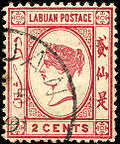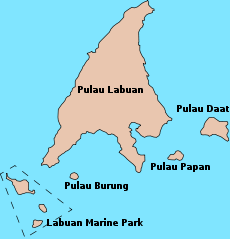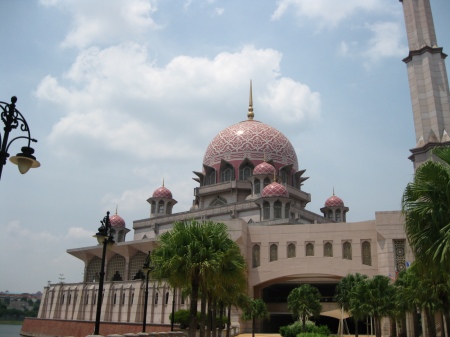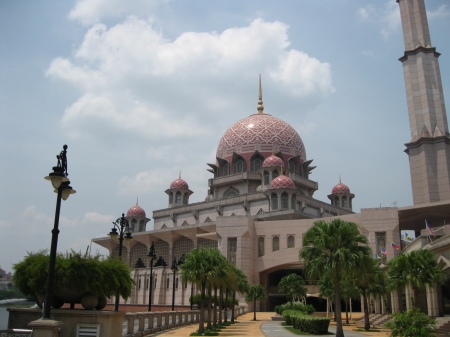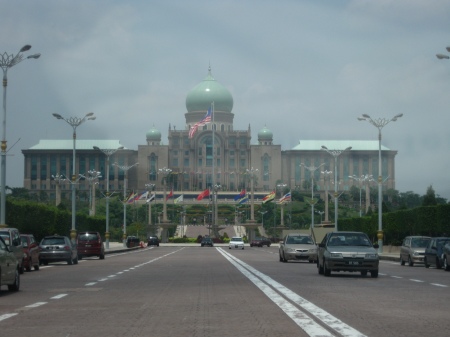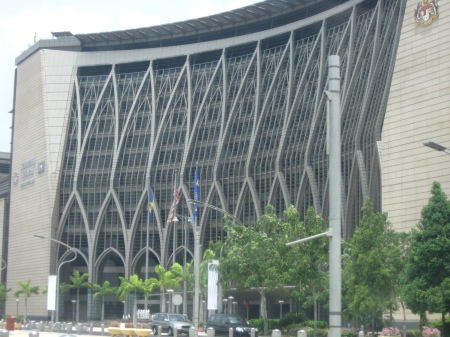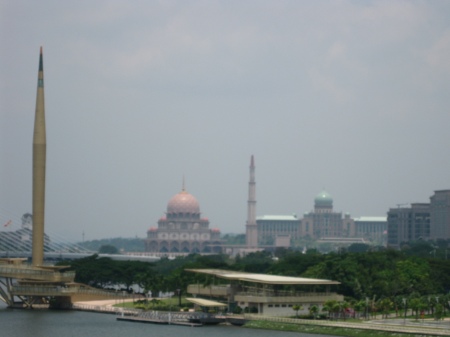An’Nur Jamek Mosque
This splendid mosque was built at a cost of US$11 million and is the pride of the Labuan’s Muslim community. Its futuristic architecture symbolizes the progressive spirit of the people and island of Labuan.
World War II Memorial Park
A beautifully landscaped cemetery, the War Memorial is located at Tanjung Purun on the outskirts of Labuan town (formerly Victoria Town). The memorial is the final resting place of fallen Allied soldiers. Maintained by the Commonwealth War Commission, it is a poignant memorial to the 4,000 Australian, New Zealand, and British Allied servicemen who had lost their lives during the World War II. A section is also dedicated to the Indian Soldiers of the Punjab Regiment who died fighting alongside their comrades. Many visitors, especially those from Australia, often return annually to pay their respects to lost friends and relatives.
Labuan Square
Previously known as the “Labuan Town Field”, it has since been transformed into an interesting park with neat lawns and fine examples of trees, shrubs, and flora that are indigenous to Labuan. The park’s design reflects Labuan’s status as an International Offshore Financial Centre and is a popular place to stroll and relax.
Peace Park
Located at Layang-Layangan Village in the west coast of Labuan, Peace Park is dedicated to all fallen soldiers of World War II. This beautifully landscaped park has developed into a place of pilgrimage for those who visit Labuan. Located next to it is Surrender Point. It was built as a memorial where the commander of the Japanese Army surrendered to the Australian on September 9th, 1945, which led to the end of World War II in Borneo.
Kampung Ayer (Water Village)
There are a few stilt villages that can be found on this island. Kampung Patau-Patau and Kampung Bebuloh Laut are two fine examples. Clusters of Malay-styled wooden houses on stilts are built out over the sea and are connected to the land by raised walkways. Currently, efforts are made to ensure that these scenic water villages are not bypassed by the rapid development that is transforming the island. A modern water village complex has been built to cater to thousands of visitors. It is facilitated with seafood restaurants, shopping malls, and a boardwalk. Visitors can also stay in waterfront chalets or enjoy a host of water sports activities.
The Chimney
Situated at Tanjong Kubong, the Chimney is the only reminder of the coaling days of Labuan. The coal-mining era started in 1847 and ended in 1912. During that time, Labuan was used as a coaling station for ships sailing to the Far East. A single rail track was constructed to transport coal to the Victoria Port.
Financial Park
Recently completed, the Financial Park at Jalan Merdeka houses international offshore banks, and insurance and trust companies. A 1,500 sitting capacity convention hall and large shopping mall is also available for visitors. This modern complex is reputed to be the only one of its kind in any International Offshore Financial Centre throughout the world.
Labuan Market
Located in the heart of Labuan town, the Labuan Market is a lively place full of colors, sights, smells, and sounds. Test your bargaining skills while finding your way around the bustling crowds. A variety of local produce such as fruits, vegetables, fresh spices, fish, prawns, batik, rattan and other handicrafts are sold. Products from around the region are also sold here.
Beaches & Islands
Labuan and its neighbouring islands are a sun-seeker’s paradise with breathtaking panoramic views of the South China Sea, secluded white sandy beaches, and lots of tropical sunshine. The remote islands of Papan, Kuraman, Daat, Rusukan Besar, Rusukan Kecil, and Burong have plenty to offer. Visitors can spend the day exploring the beaches or the dense jungle inland, which is home to a variety of plants and animal. There are also a variety of water sports, such as jet skiing, wind surfing, scuba diving, fishing, and even wreck diving. The crystal clear water offers a window to the rich marine life of the South China Sea.
Wreck Diving
Labuan offers ideal diving conditions all year round for beginning, novice, and seasoned divers. Crystal clear waters and an opulence of shipwrecks have made Labuan the region’s center for wreck diving. Four shipwrecks have been discovered so far. Two were sunk during World War II and the other two were commercial vessels that sank in the 1980s. Diving expeditions can be arranged to Labuan’s four major wrecks: American, Australian, Blue Water, and Cement Wreck.
